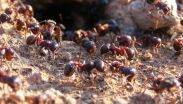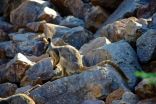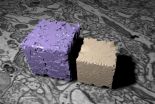(Press-News.org) Sydney, Australia -- Reintroducing Tasmanian devils to the mainland could improve biodiversity by limiting the spread of red foxes and feral cats in habitats where dingoes have been culled, a new study suggests.
Tasmanian devils (Sarcophilus harrisii) once lived across the Australian continent, but went extinct on the mainland about 3,000 years ago - likely as a consequence of being hunted by dingoes.
Today, extensive dingo culls to protect livestock have shifted the ecological balance, paving the way for invasive predators to wreak havoc with native mammals, worsening Australia's extinction crisis and igniting discussions about bringing the devil back to the mainland.
Ecologists from UNSW Australia in Sydney have now assessed - for the first time - the impact of reintroducing Tasmanian devils to forest ecosystems in South Eastern parts of New South Wales, Australia.
"There are large areas where the dingo is gone and we need a predator who can suppress fox numbers," says PhD candidate Daniel Hunter from the UNSW School of Biological, Earth and Environmental Sciences.
"The devil is the obvious answer. It doesn't pose as serious a risk to livestock, and it has played a major role in stopping foxes from establishing a foothold in Tasmania."
Hunter is the lead author of a study published in the journal Biological Conservation, which highlights the potential benefits of using the devil as a replacement apex predator. The study found that the marsupial could restore important ecosystem functions once performed by dingoes.
In addition, reintroduction could help ensure the long-term survival of the devil, which has seen massive population decline over the last two decades from devil facial tumour disease.
The team reviewed previous studies to understand more about the ecological impacts of dingoes, devils and foxes, and then applied this information to their models, which tried to predict how a range of ecosystems would respond to the presence of devils.
These models mapped out different scenarios in which the re-introduced devil co-existed with varying populations of the two other predators: ranging from completely eradicated, to reduced, and abundant.
Their results suggest that reintroducing devils would result in fewer foxes and feral cats, as well as grazing herbivores such as wallabies, which remove vegetation that helps smaller animals hide from predators.
"We suspect that they help control the fox and cat populations by directly attacking them and their young," says co-author Associate Professor Mike Letnic from UNSW. "There is very good evidence from Tasmania that cats modify their movements and numbers are lower where there are healthy devil populations."
The research also suggests there would be benefits for small and medium-sized animals, such as bandicoots and ringtail possums, as well low-lying vegetation. However, threatened species vulnerable to fox predation benefited little from devil introduction.
"Devils aren't a silver bullet, but we think that they could do a lot of good on the mainland, and this study indicates that a monitored process of reintroduction could actually work," says Associate Professor Letnic. "We need to take action to arrest the extinction crisis we have in Australia, and that requires being bold and trying something new."
INFORMATION:
Media Contact: Myles Gough, myles.gough@unsw.edu.au, +61 2 9385 1370, +61 4 9116 2717
**NOTE: Daniel Hunter, the lead author, recently released a documentary called Battle in the Bush about the important ecological role played by dingoes in Australian ecosystems. A trailer can be viewed here: https://newsroom.unsw.edu.au/battle-bush-%E2%80%93-trailer and the full film can be made available for download.
SEATTLE, WA, AUGUST 11, 2015 - A statistical model--now an easy-to-use software tool--local police can use to identify a series of related crimes and nab a suspect was unveiled today by Michael D. Porter during a presentation at the 2015 Joint Statistical Meetings (JSM 2015) in Seattle.
Porter presented a talk titled "A Statistical Approach to Crime Linkage during a session focused on improving analysis of defense systems using statistical methods. He collaborated on the project with Brian J. Reich, associate professor of statistics at North Carolina State University.
Crime ...
An international team of researchers found that the evolutionary loss of the "altruistic" worker caste in ants is not accompanied by a loss of genes.
Social insects, such as ants, are typically characterized by two distinct female castes: workers and queens. Previous research has found that workers and queens each express different sets of genes leading scientists to speculate that there are worker specific or "altruistic" genes that promote sociality.
Testing this "novel gene" hypothesis is difficult given that all ants are social. However, not all ants make workers. ...
Controlling feral pigs is the most cost-effective strategy to help save 148 endangered plant and animal species in the Lake Eyre Basin, and is just one of the significant findings of a three-year study led by QUT applied ecologist Associate Professor Jennifer Firn.
Professor Firn, from QUT's Institute for Future Environments, worked with Dr Josie Carwardine and CSIRO's Conservation Decisions team and a research team from the University of Queensland including Dr Ramona Maggini, to identify and prioritise 23 strategies to protect endemic species in the world's largest ...
Until now only known for role in polyglutamine diseases, such as Huntington's.
Scientists at VIB and KU Leuven have revealed that variable polyglutamine repeats in the DNA tune the function of the protein in which they reside. To date, these repeats were known only to cause severe neurodegenerative diseases such as Huntington's. These findings now show that polyglutamine repeats may be more than just harmful elements. The study was published in the leading molecular biology journal Molecular Cell and opens the door to further studies exploring new therapies for human ...
Widespread species are at just as high risk of being wiped out as rare ones after global mass extinction events, says new research by UK scientists.
There have been five mass extinction events in the Earth's history, including climate change caused by volcanoes and an asteroid hit that wiped out the dinosaurs.
In general, geographically widespread animals are less likely to become extinct than animals with smaller geographic ranges, offering insurance against regional environmental catastrophes.
However, a study published in Nature Communications has found this insurance ...
A natural compound called limonene, which is found in oranges and lemons, could be indicative in early-stage diagnosis of liver disease, according to research published in the journal EBioMedicine by researchers in the Molecular Physics Group at the University of Birmingham.
Limonene occurs in the greatest abundance in citrus fruits, but it is also found in a large variety of other fruit and vegetables. It can be ingested or inhaled as it is a common additive in commercial food and drinks, is used to give the fruit flavour to some sweets and is used in cosmetics, ...
Scientists at the University of Liverpool have shown that educating pet owners about canine body language may not be the answer to preventing dog bites as originally thought.
Experts have argued that dog bites are preventable if owners are properly educated on how to read canine behaviour and identify high risk situations. Until now, however, the effectiveness of this theory has not been evaluated in any great depth.
At a time when data suggests dog bite incidents are increasing, the team at Liverpool interviewed victims of dog attacks to gain further understanding ...
In 1884, a delegation of international representatives convened in Washington, D.C. to recommend that Earth's prime meridian (the north-south line marking zero degrees longitude) should pass through the Airy Transit Circle at the Royal Observatory in Greenwich, England.
(A transit circle is an instrument for measuring star positions, and could be used for determining local time; this one was named for its designer, British Astronomer Royal George Airy.)
But modern navigators, mapmakers, surveyors and London tourists now find that zero longitude runs 334 feet east of ...
Using an innovative method, EPFL scientists show that the brain is not as compact as we have thought all along.
To study the fine structure of the brain, including its connections between neurons, the synapses, scientists must use electron microscopes. However, the tissue must first be fixed to prepare it for this high magnification imaging method. This process causes the brain to shrink; as a result, microscope images can be distorted, e.g. showing neurons to be much closer than they actually are. EPFL scientists have now solved the problem by using a technique that ...
1. Clinical scoring system suggests possibility of more precise colon cancer screening
Free abstract: http://www.annals.org/article.aspx?doi=10.7326/M14-1720
Editorial: http://www.annals.org/article.aspx?doi=10.7326/M15-1677
URLs go live when embargo lifts
A clinical scoring system for colon cancer risk could help physicians identify which average-risk patients could potentially skip a colonoscopy and instead be screened with a less-invasive method. The researchers suggest that this approach could increase the uptake and efficiency of colorectal cancer (CRC) ...



